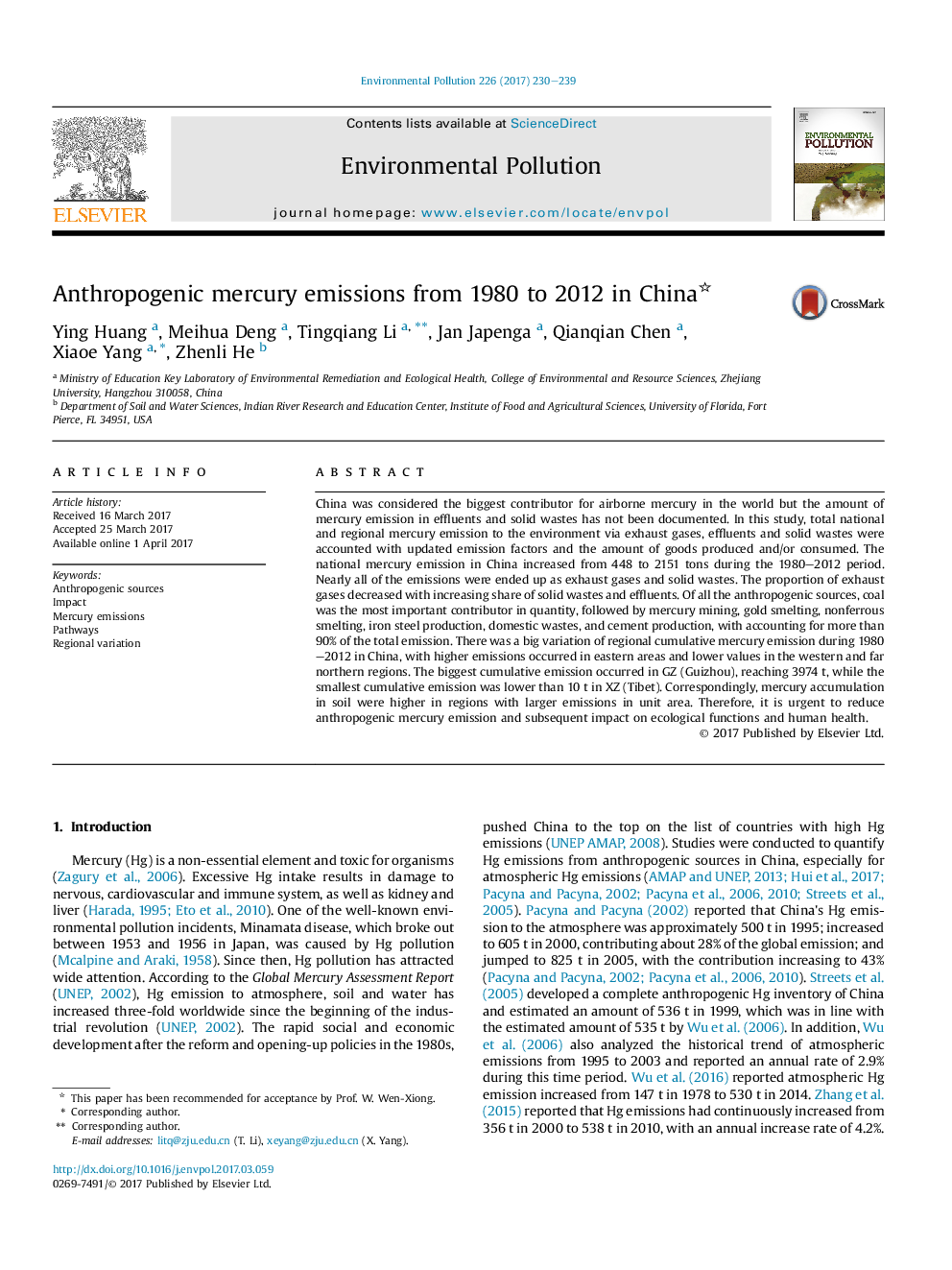| کد مقاله | کد نشریه | سال انتشار | مقاله انگلیسی | نسخه تمام متن |
|---|---|---|---|---|
| 5749085 | 1619147 | 2017 | 10 صفحه PDF | دانلود رایگان |

- National and regional mercury emissions from anthropogenic sources were calculated with updating emission factors in 1980-2012 in China.
- The amounts of mercury emission via exhaust gases, effluents and solid wastes were analyzed.
- National mercury emissions increased from 448 tons to 2151 tons, and 90% ended up as exhaust gases and solid wastes.
- Higher regional emission occurred in eastern areas and lower in western and far northern regions in China, as well as the amount of increased mercury content in soil.
China was considered the biggest contributor for airborne mercury in the world but the amount of mercury emission in effluents and solid wastes has not been documented. In this study, total national and regional mercury emission to the environment via exhaust gases, effluents and solid wastes were accounted with updated emission factors and the amount of goods produced and/or consumed. The national mercury emission in China increased from 448 to 2151 tons during the 1980-2012 period. Nearly all of the emissions were ended up as exhaust gases and solid wastes. The proportion of exhaust gases decreased with increasing share of solid wastes and effluents. Of all the anthropogenic sources, coal was the most important contributor in quantity, followed by mercury mining, gold smelting, nonferrous smelting, iron steel production, domestic wastes, and cement production, with accounting for more than 90% of the total emission. There was a big variation of regional cumulative mercury emission during 1980-2012 in China, with higher emissions occurred in eastern areas and lower values in the western and far northern regions. The biggest cumulative emission occurred in GZ (Guizhou), reaching 3974Â t, while the smallest cumulative emission was lower than 10Â t in XZ (Tibet). Correspondingly, mercury accumulation in soil were higher in regions with larger emissions in unit area. Therefore, it is urgent to reduce anthropogenic mercury emission and subsequent impact on ecological functions and human health.
246
Journal: Environmental Pollution - Volume 226, July 2017, Pages 230-239